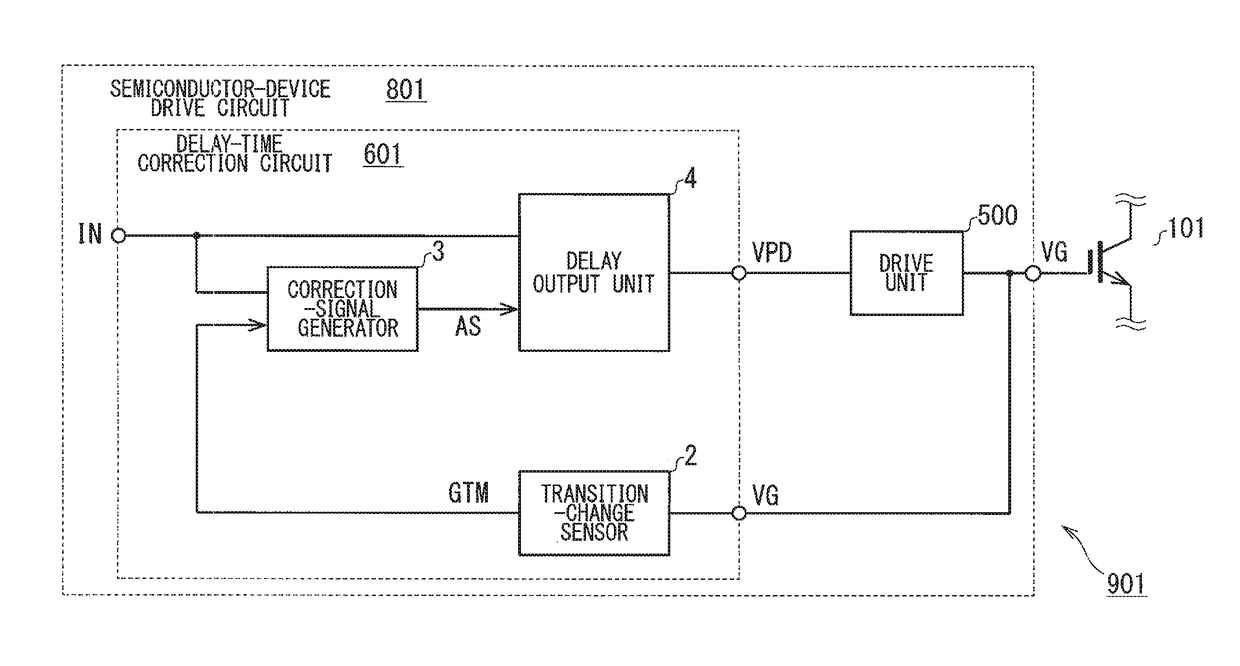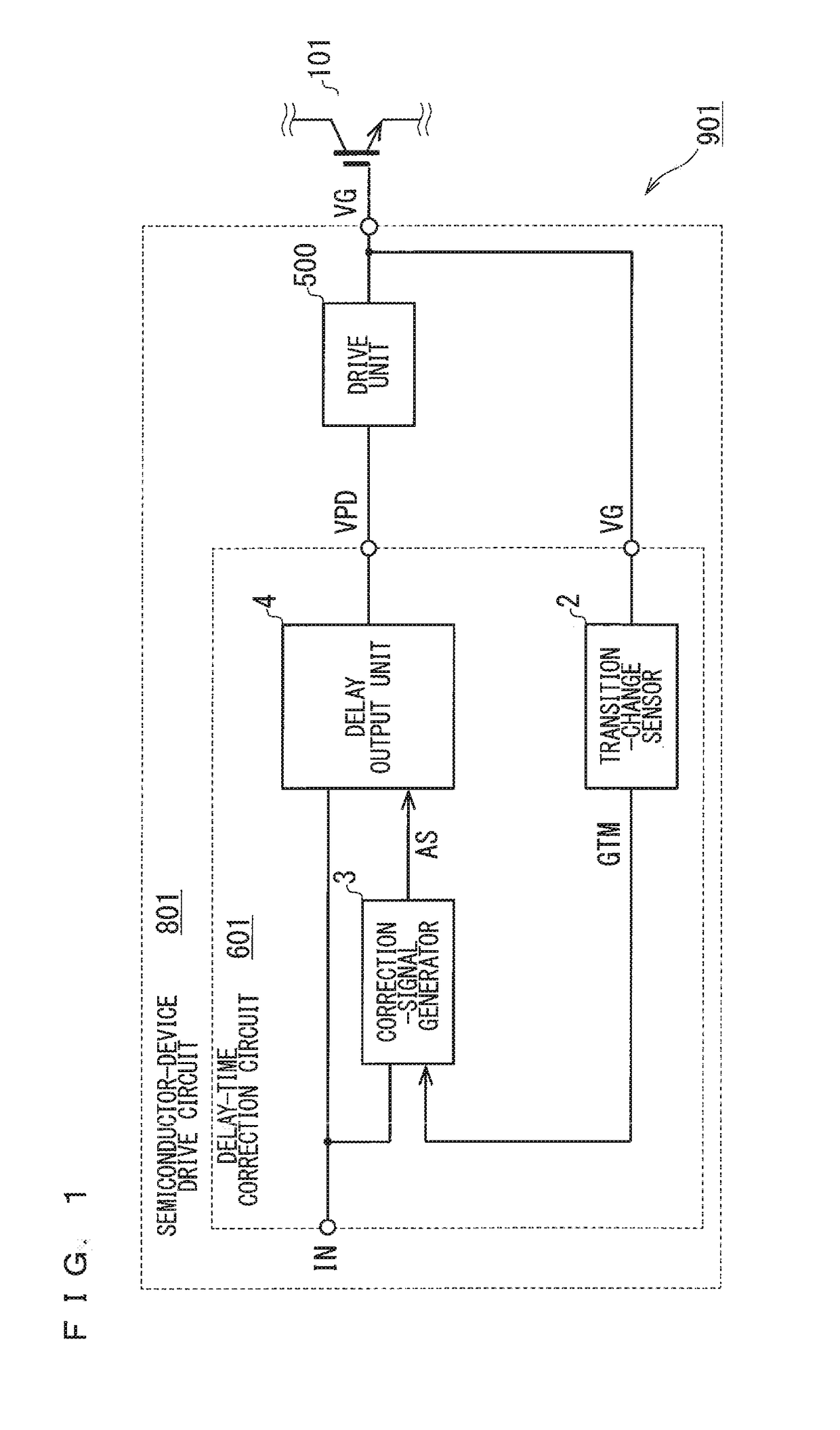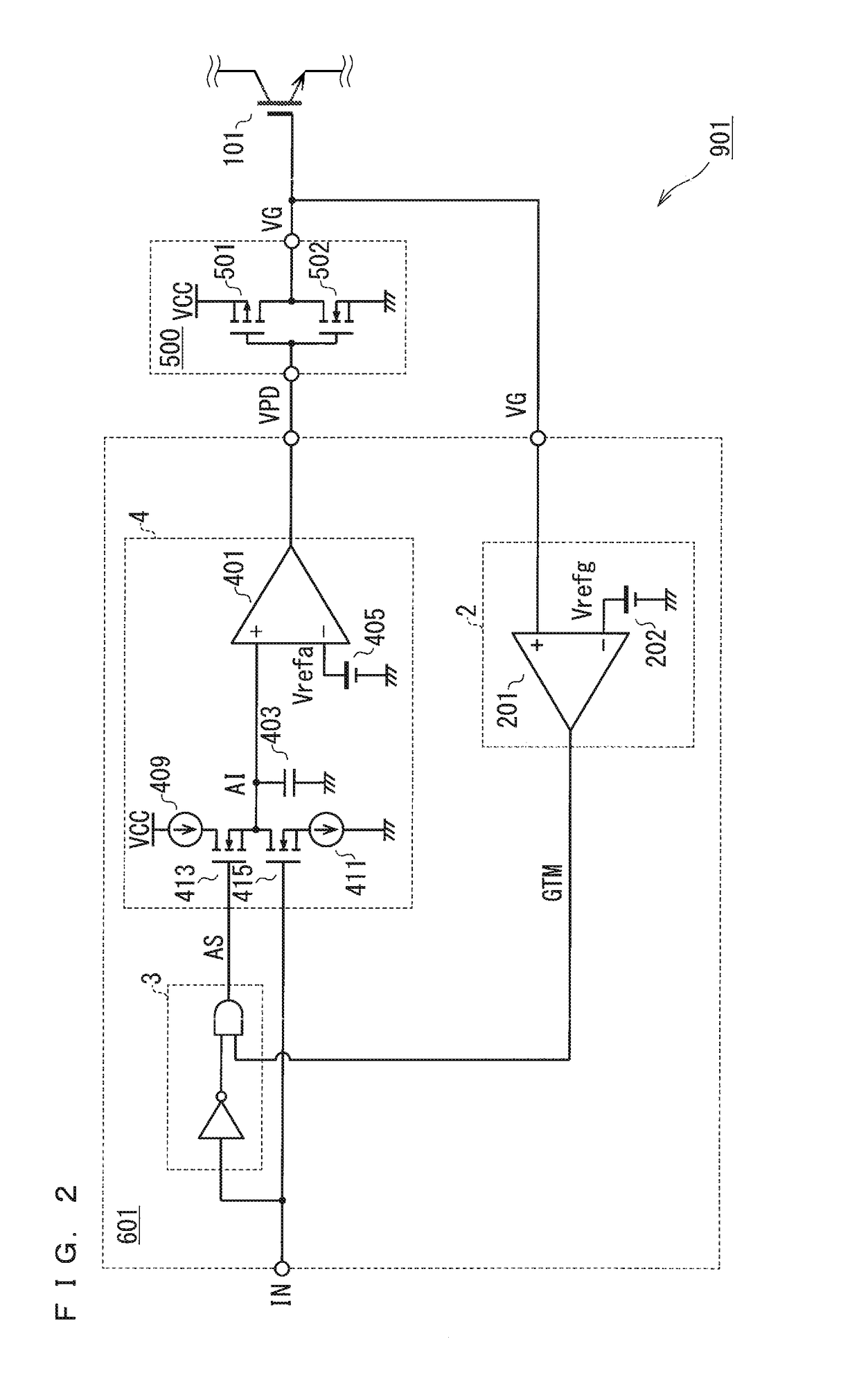Delay-time correction circuit, semiconductor-device drive circuit, and semiconductor device
a technology of delay-time correction and drive circuit, which is applied in the direction of electronic switching, power conversion systems, pulse techniques, etc., can solve the problems of undesirable short circuit, distorted waveform, timing lag in switching operations between semiconductor switching elements, etc., and achieve accurate correction of deviation in output signal width. , the effect of simple configuration
- Summary
- Abstract
- Description
- Claims
- Application Information
AI Technical Summary
Benefits of technology
Problems solved by technology
Method used
Image
Examples
first preferred embodiment
Summary
[0026]FIG. 1 is a schematic block diagram of a configuration of an inverter 901 (semiconductor device) in a first preferred embodiment. The inverter 901 includes a semiconductor-device drive circuit 801 and an IGBT 101 (semiconductor switching element). The inverter 901 performs a switching operation using a drive signal that is generated in response to an external input signal, IN. The input signal IN is a digital signal corresponding to a turn-on state and turn-off state of the IGBT 101, and is a binary signal representing a high level or low level. The drive signal is specifically a gate signal, VG, (drive signal, gate voltage) that is applied to a gate of the IGBT 101.
[0027]The semiconductor-device drive circuit 801 includes a drive unit 500 and a delay-time correction circuit 601. The delay-time correction circuit 601 may be integrated within a single integrated circuit (IC) excluding a drive unit 500. Alternatively, the delay-time correction circuit 601 may be integrate...
second preferred embodiment
Summary
[0063]FIG. 4 is a schematic block diagram of a configuration of a delay-time correction circuit 602 in a second preferred embodiment. The delay-time correction circuit 602 can be used in the semiconductor device 901 (FIG. 1) as the alternative to the delay-time correction circuit 601. Delay-time correction circuits in the other preferred embodiments, details of which will be described later on, can be used in the same manner.
[0064]The first preferred embodiment details a configuration in which the delay output unit 4 stores the time corresponding to the length of the period for the transition change in the immediately preceding turn-off operation. The second preferred embodiment details a configuration in which the delay output unit 4 stores a time corresponding to the length of the period for the transition change in the immediately preceding turn-on operation. To conform to this configuration, FIG. 4 illustrates a NOT circuit inserted between a terminal for the input signal...
example of implementation
[0074]FIG. 5 is a circuit diagram illustrating a non-limiting example of how the aforementioned delay-time correction circuit 602 is implemented. FIG. 6 is a time chart illustrating the operation of the delay-time correction circuit 602.
[0075]The correction-signal controller 5 includes a latch circuit 301 and a latch circuit 302. Here, each of the latch circuits 301 and 302 is a set-reset flip-flop (SR-FF). In FIG. 5, “R”, “S”, and “Q” respectively denote a reset (R) signal, a set (S) signal, and an output (Q) signal.
[0076]The delay output unit 4 includes a circuit that is the same as the circuit (FIG. 2) in the first preferred embodiment. The internal output unit 6 may include a circuit configuration that is almost similar to the delay output unit 4 (FIG. 2). Specifically, the internal output unit 6 includes a capacitance 413b, a constant current source 409b, a constant current source 411b, an NMOS 413b, an NMOS 415b, a comparator 401b, and a constant voltage source 405b. These com...
PUM
 Login to View More
Login to View More Abstract
Description
Claims
Application Information
 Login to View More
Login to View More - R&D
- Intellectual Property
- Life Sciences
- Materials
- Tech Scout
- Unparalleled Data Quality
- Higher Quality Content
- 60% Fewer Hallucinations
Browse by: Latest US Patents, China's latest patents, Technical Efficacy Thesaurus, Application Domain, Technology Topic, Popular Technical Reports.
© 2025 PatSnap. All rights reserved.Legal|Privacy policy|Modern Slavery Act Transparency Statement|Sitemap|About US| Contact US: help@patsnap.com



